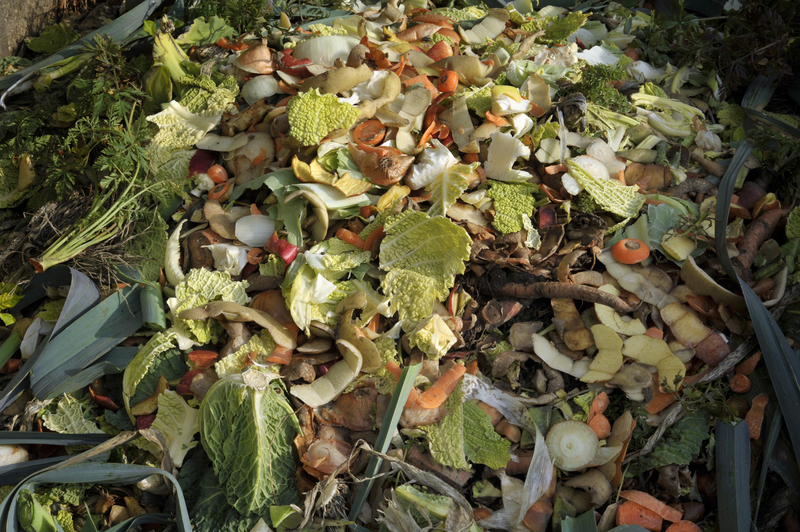The Ultimate Guide to Safe and Responsible PPE Disposal
In the wake of global health crises such as the COVID-19 pandemic, the use of Personal Protective Equipment (PPE) has become a staple across various sectors. As a result, the world is now facing a new challenge: how to properly and safely dispose of used PPE to protect both people and the environment. In this comprehensive guide, we'll explore everything you need to know about safe and responsible PPE disposal, from understanding the risks to adopting eco-friendly and compliant practices.

Why Responsible PPE Waste Disposal Matters
Proper disposal of used PPE--such as masks, gloves, gowns, and face shields--is crucial for several reasons. First, disposable PPE can harbor infectious agents, posing a health risk if not handled correctly. Second, PPE waste contributes to environmental pollution, especially when not disposed of in designated channels. Safe PPE disposal not only protects individuals but also supports public health, environmental sustainability, and regulatory compliance.
- Health and Safety: Incorrect disposal may spread infections and endanger communities.
- Environmental Impact: Single-use PPE items, particularly plastics, often end up polluting waterways and ecosystems.
- Legal Compliance: Organizations must adhere to PPE waste management regulations to avoid penalties.
Understanding PPE: Types and Materials
Before exploring disposal techniques, it's important to recognize the types and materials of PPE. Common PPE items include:
- Disposable face masks and respirators (N95, surgical masks)
- Disposable gloves (latex, nitrile, vinyl)
- Protective gowns and coveralls
- Face shields and goggles
- Shoe covers and caps
Most PPE is made from plastics like polypropylene, PVC, polyethylene, or rubber. Understanding the material composition is key for determining recycling or incineration possibilities.
The Risks of Improper PPE Waste Disposal
Public Health Hazards
When PPE contaminated with infectious agents is mixed with household waste, it can become a vector for disease transmission. Waste handlers, cleaning staff, and even the public are at risk if exposed to improperly disposed PPE.
Environmental Threats
*Disposable PPE* is often non-biodegradable. When littered, it finds its way into streets, parks, rivers, and oceans, threatening wildlife and contributing to microplastic pollution. Inadequately managed PPE waste exacerbates the mounting plastic pollution crisis.
Legal and Reputational Issues
Failure to adhere to safe PPE disposal regulations can lead to fines, legal proceedings, and damage to an organization's reputation. This is particularly critical for healthcare facilities, schools, and enterprises.
Best Practices for Safe and Responsible PPE Disposal
Implementing effective PPE waste management requires a systematic approach. Below are essential guidelines to ensure the safe and responsible disposal of personal protective equipment:
1. Segregate PPE Waste from General Waste
- Use clearly labeled, designated bins for PPE disposal.
- Place bins with lids in convenient and high-traffic areas.
- Provide visual instructions to encourage proper use.
2. Use Appropriate Waste Bins and Liners
- Use yellow or red biohazard bags for contaminated PPE if available.
- For community settings, non-infected PPE (e.g., masks from healthy individuals) can often go into regular trash, but avoid recycling bins unless specified by local authorities.
3. Handle and Transport PPE Waste Safely
- Ensure waste handlers wear protective gear during collection.
- Seal waste bags securely before moving.
- Minimize contact with potentially contaminated PPE waste.
4. Follow Local and National Regulations
- Stay informed on government-issued guidelines for personal protective equipment disposal.
- Train staff regularly on PPE waste handling protocols.
- Maintain documentation to demonstrate compliance.
PPE Disposal for Different Environments
Healthcare Settings
Healthcare facilities generate large quantities of potentially infectious PPE waste. The following protocol is recommended:
- Dispose of all used, single-use PPE in special clinical waste containers.
- Label and color-code bins to distinguish between infectious and non-infectious waste.
- Use autoclaving, incineration, or chemical treatment as required by regulations.
Community Spaces (Schools, Offices, Public Areas)
- Provide multiple disposal stations for face masks and gloves.
- Encourage a 'bag it, bin it' approach--bringing a personal waste bag if needed.
- Ensure regular waste collection to prevent overflow and littering.
Home and Personal Use
- Fold used masks inward and place them in a bag before disposal in household trash.
- Wash hands thoroughly after discarding PPE.
- Never flush masks, gloves, or wipes down toilets or drains.
Sustainable and Eco-Friendly PPE Waste Management
With rising concern about plastic waste, sustainable alternatives and methods for disposing of PPE are in the spotlight. Here are practical steps you can take for environmentally responsible PPE disposal:
Choose Reusable PPE Where Possible
- Opt for reusable, washable masks and face shields for everyday use (where appropriate and safe).
- Follow manufacturers' cleaning and disinfection guidelines strictly.
Participate in PPE Recycling Programs
- Check if local recycling schemes accept PPE items. Programs like TerraCycle may provide dedicated PPE recycling solutions.
- Never place contaminated PPE in standard recycling bins unless explicitly approved.
Support Innovations in Biodegradable PPE
- Several companies are developing *biodegradable masks and gloves* using starch-based or plant materials.
- Encourage suppliers and buyers to invest in sustainable PPE products.
How to Raise Awareness About Safe PPE Disposal
Education is key to responsible PPE waste disposal. Here are ways to increase awareness in your community or organization:
- Display clear signage near disposal stations explaining PPE disposal protocols.
- Offer regular training sessions for staff and students.
- Distribute leaflets or use social media campaigns to inform about PPE waste hazards.
- Promote the message: *Dispose With Care - Protect Each Other and the Environment.*
The Role of Businesses and Organizations in PPE Waste Management
Companies and institutions have a responsibility to establish and maintain proper PPE waste management systems. This includes:
- Implementing PPE waste collection points across facilities.
- Contracting certified waste handlers or disposal services.
- Regularly reviewing and updating disposal protocols to reflect evolving guidelines.
Corporate Sustainability Initiatives
- Report annually on PPE waste volumes and disposal methods.
- Set targets for reducing single-use PPE and adopting greener alternatives.
Legal and Regulatory Requirements for PPE Disposal
Local and international regulations regarding safe and responsible PPE disposal may vary. Key points include:
- Adhering to OSHA, EPA, and WHO standards for handling infectious waste.
- Following national health department guidelines (such as CDC recommendations).
- Ensuring transportation and processing of PPE waste by licensed facilities.
Non-compliance can result in heavy fines and legal action. Always stay informed on updated laws on PPE waste management in your region.
PPE Disposal During Outbreaks and Pandemics
During infectious disease outbreaks, following enhanced PPE disposal protocols is essential:
- Increase the frequency of waste collection and removal.
- Segregate waste from infected and non-infected individuals.
- Use double-bagging methods for added containment.
- Inform local waste authorities for proper treatment and destruction.
Common Mistakes in PPE Disposal (And How to Avoid Them)
A surprising amount of PPE still ends up in undesirable places, presenting ongoing challenges. Common mistakes include:
- Littering Used PPE: Always use bins, never discard masks or gloves in streets or natural areas.
- Mixing PPE With Recyclables: PPE is generally non-recyclable and can contaminate recycling streams.
- Improper Labeling: Use clear signage to avoid confusion over which bin to use.
- Failing to Wash Hands: Always wash hands thoroughly after handling used PPE.

Conclusion: Protecting Health and Environment Through Safe PPE Disposal
The surge in PPE usage is unlikely to ebb anytime soon. By committing to safe and responsible PPE disposal, individuals, businesses, and governments can play a pivotal role in safeguarding public health, protecting waste workers, and preserving our environment from the onslaught of single-use plastics. Outlined in this guide are the best practices and key considerations to ensure PPE is disposed of correctly.
Whether you're a healthcare worker disposing of contaminated gear or a concerned citizen seeking to reduce your environmental footprint, remember that every action counts. Let's forge a future where responsible PPE waste management is standard practice across all sectors. Together, we can keep our communities and our planet safe.
Frequently Asked Questions (FAQs) About PPE Disposal
- Can masks and gloves be recycled?
- Most masks and gloves are made from non-recyclable plastics and should not go into your standard recycling bin unless a specific PPE recycling program is available.
- How often should PPE waste bins be emptied?
- Bins should be emptied regularly, at least once per day in high-usage areas, and more often during outbreaks or pandemics.
- Is burning PPE at home safe?
- No, burning PPE at home can release toxic fumes. Always use designated disposal systems as advised by local authorities.
- What should I do with reusable PPE?
- Clean and disinfect reusable PPE according to the manufacturer's instructions before each use.
- Where can I learn more about PPE disposal guidelines?
- Check government health department websites, environmental agencies, or consult your organization's waste management team for the most current information.
By following this ultimate guide, everyone can contribute to a safer, cleaner, and more sustainable world--one PPE item at a time.